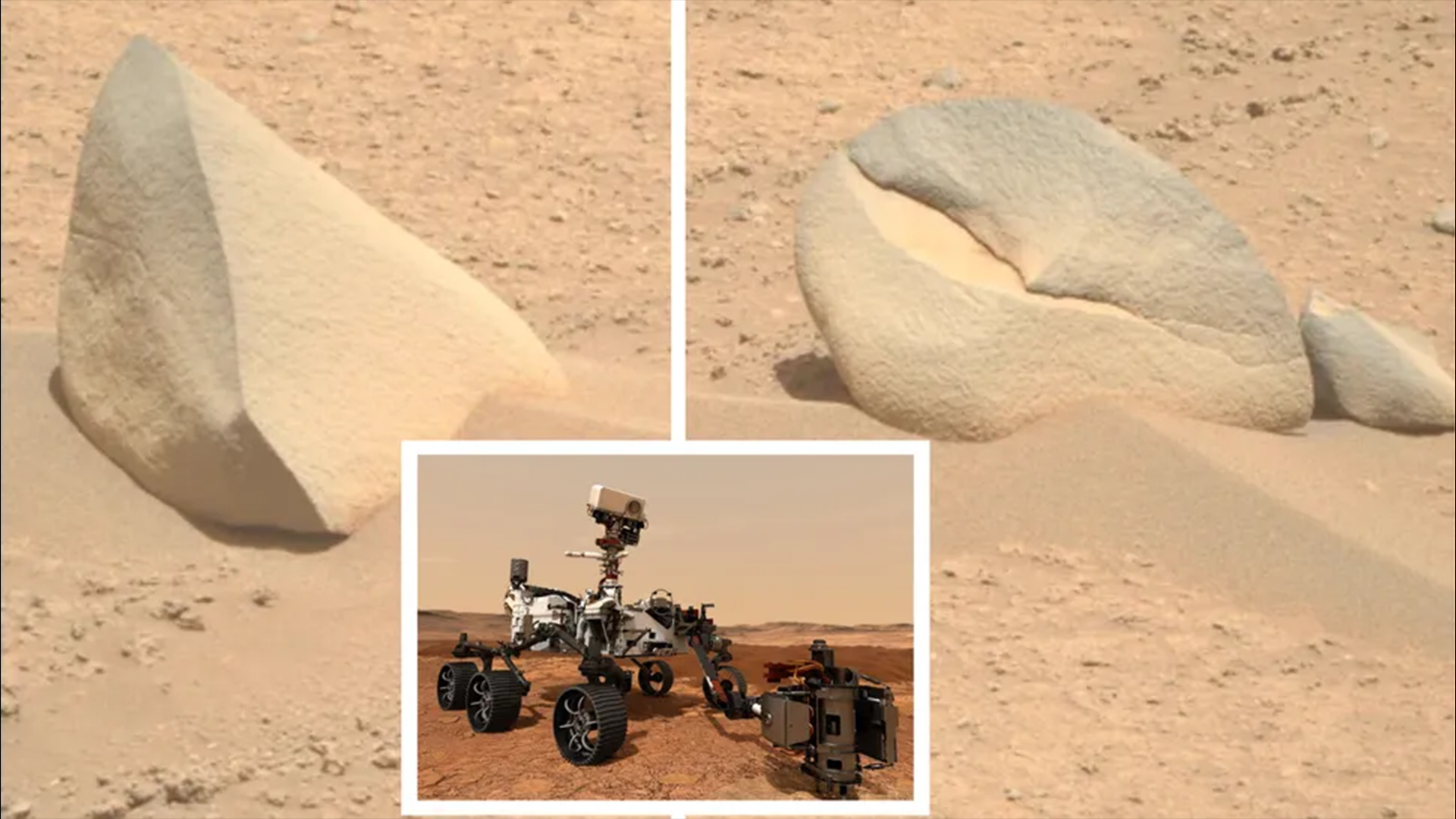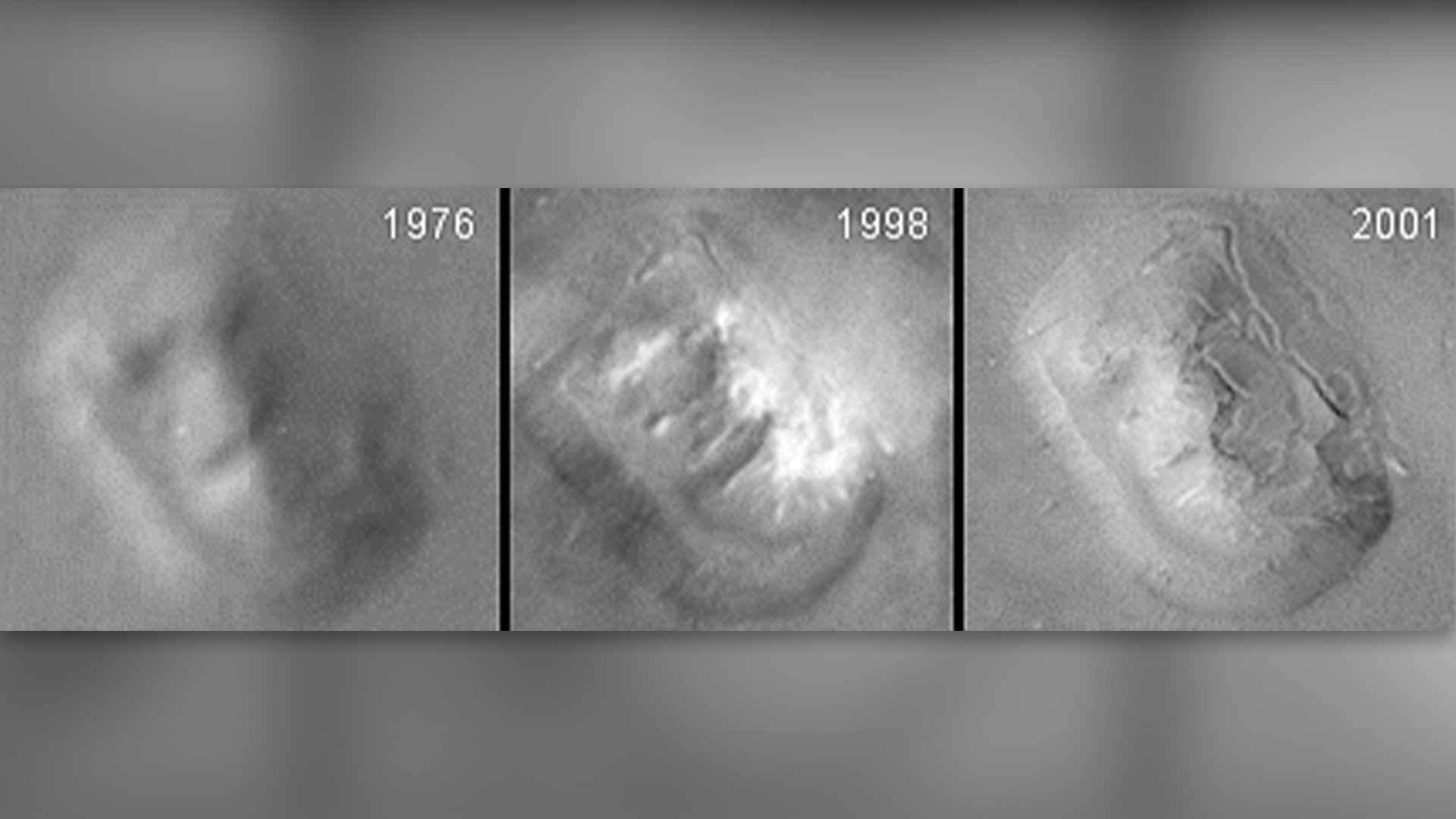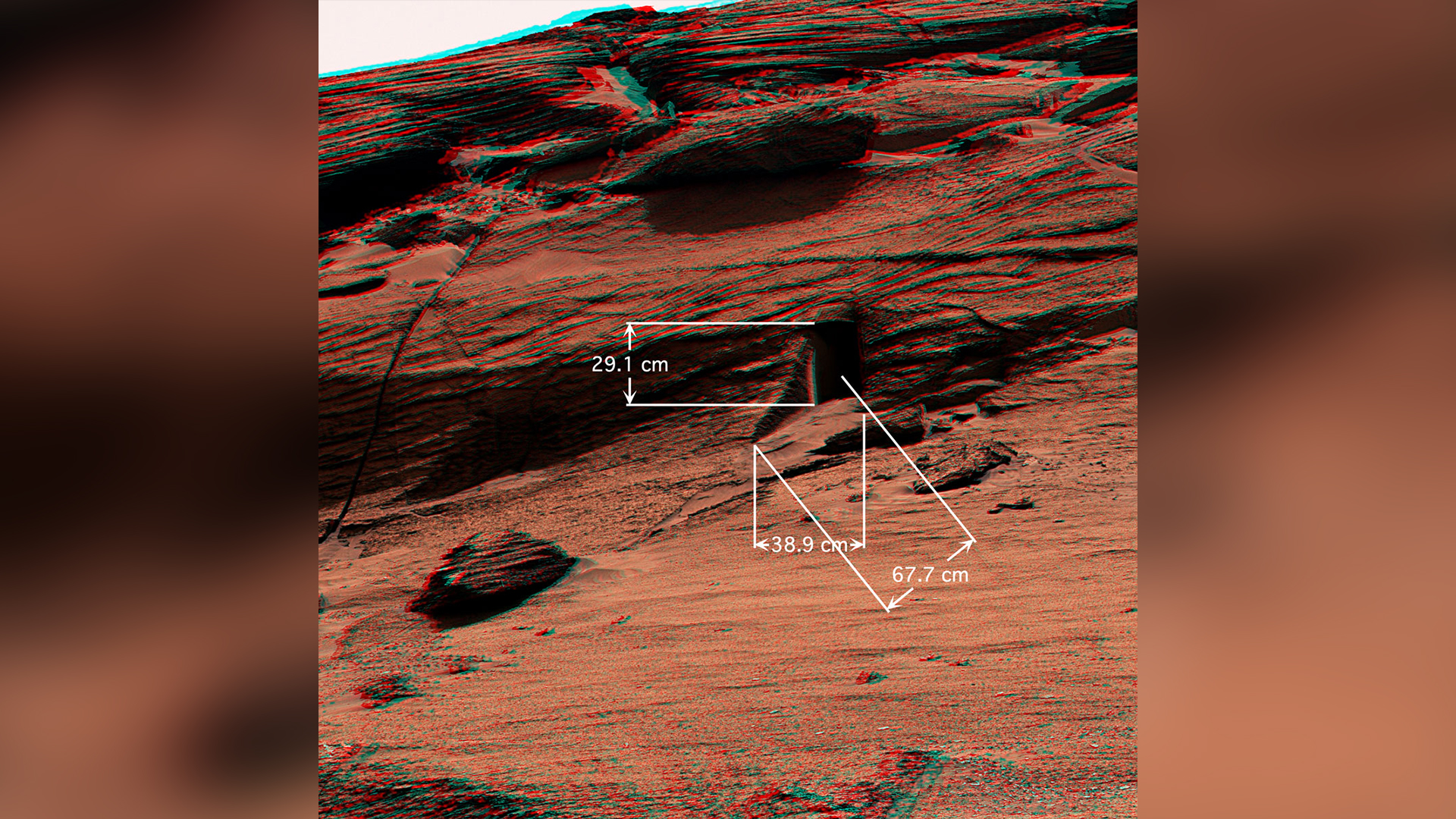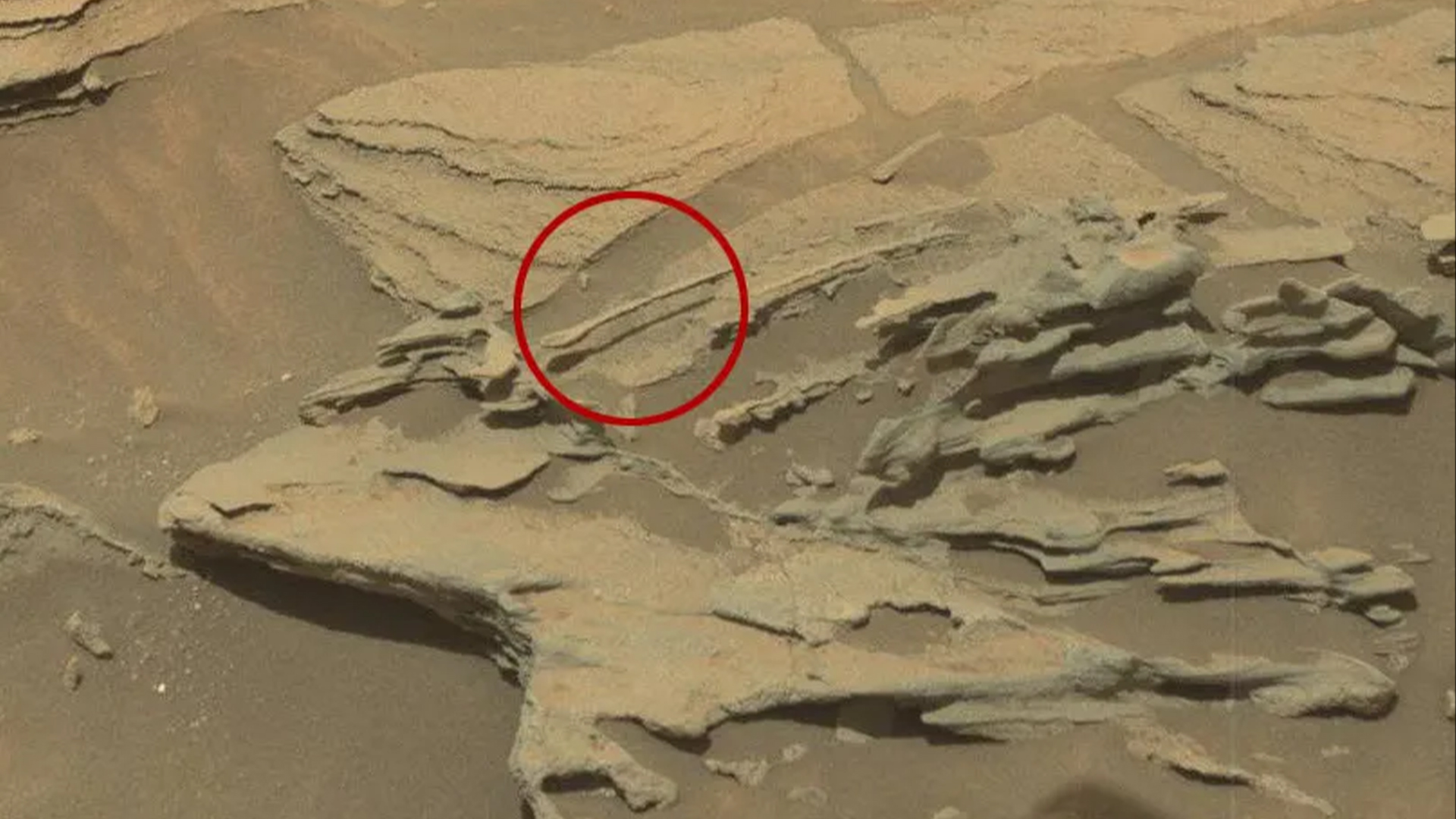Perseverance rover spots a shark fin and crab claw on Mars
Is something fishy happening on the Red Planet, or is it all in our minds again?

It looks like something fishy is happening on Mars. NASA's Perseverance Rover recently spotted a shark-fin-looking outcrop and an accompanying crab-claw-like boulder on the Red Planet.
Since arriving on Mars on Feb. 18, 2021, the rolling robot has been exploring the Jezero Crater on Mars while hunting for signs of ancient life. But these strange rocks, captured on Aug. 18, 2023, came as surprise.
Even though the now barren and arid landscape of Mars overflowed with water billions of years ago, there is no evidence that the planet was abundant with any sort of seafood, and these images certainly don't change that. Instead, what the rocks in the image evidence is the phenomenon of pareidolia.
Pareidolia refers to the brain's tendency to perceive a meaningful image from random visual data. It is the reason we see dogs or clowns in clouds, and it has been responsible for humans catching a wide variety of famous figures in foodstuff. And Mars is no stranger to being subjected to pareidolia.
In fact, one of the most famous examples of pareidolia in history is the iconic "Face on Mars."
Related: NASA spies Martian rocks that look just like a teddy bear
What was the Face on Mars?
In July 1976, NASA's Viking 1 spacecraft was exploring Mars from orbit, taking pictures of the Martian landscape that would later be used to select a landing site for the Viking 2 lander. Then, something extraordinary was revealed in the monitors of its operators here on Earth.
Get the world’s most fascinating discoveries delivered straight to your inbox.
The spacecraft had appeared to capture a huge sculpture of a crudely drawn face replete with eyes, a nose and a mouth. The image was shown to the public a few days after it was taken, and despite NASA being clear the appearance of a face was an illusion caused by shadows, it caused quite a fuss. Many claimed that this was the work of sentient beings.
The debate surrounding the "Face on Mars" raged (at least in certain quarters) through the 1980s, with books published on the topic and even scientific conferences held to discuss it.
Much of the sensationalism surrounding this image was settled in the late 1990s. In Sept. 1997, NASA's Mars Global Surveyor (MGS) arrived at the Red Planet, with one of its primary missions being to reexamine this rocky outcrop.
"We felt this was important to taxpayers," chief scientist for NASA's Mars Exploration Program Jim Garvin explained in a statement. "We photographed the Face as soon as we could get a good shot at it."
In April 1998, the MGS finally flew over the Cydonia region of Mars, where the supposed Face on Mars was located, capturing images ten times sharper than those taken 18 years prior by Viking 1. These revealed the formation to be much more natural in nature, with evidence of facial features fading. Still, some insisted the facial features of this supposed alien monument had been obscured by haze as the MGS flew overhead.
However, such objections were dealt a serious blow in April 2001 when the same spacecraft imaged the outcrop on a cloudless day for Cydonia. This revealed the Face on Mars to be a butte, or mesa, which is a common geological feature in the western United States.
"It reminds me most of Middle Butte in the Snake River Plain of Idaho," Garvin said. "That's a lava dome that takes the form of an isolated mesa about the same height as the Face on Mars."
Yet, the revelation that this Martian facial sculpture was little more than a common geological structure hasn't quelled our passion for space simulacrum.
In May of this year, Perseverance's fellow Martian rover caught a shadowy feature in a rock face nicknamed the "East Cliffs" that many claimed was a "doorway" carved into the rock. Some even speculated that this could be one end of a passageway leading to an underground bunker.
NASA poured cold water on speculation when it revealed this so-called doorway was little more than a few inches wide and tall. Geologists also spoiled the party by adding that it is likely the result of several straight-line fractures coinciding.
But there was more to discuss as a recent image by the agency's Curiosity rover seemed to show an abandoned spoon floating over the surface of the Red Planet.
The hovering cutlery imaged on Aug. 30 was actually revealed to be a strangely shaped rock, with NASA officials writing in an image description: "There is no spoon. This weird Mars feature is likely a ventifact — a rock shaped by wind."
The "Martian spoon" is just further evidence that humans really eat up all Mars-related pareidolia. Though these images ultimately represent random rock formations, speculating about their significance can be fascinating in itself.
Robert Lea is a science journalist in the U.K. who specializes in science, space, physics, astronomy, astrophysics, cosmology, quantum mechanics and technology. Rob's articles have been published in Physics World, New Scientist, Astronomy Magazine, All About Space and ZME Science. He also writes about science communication for Elsevier and the European Journal of Physics. Rob holds a bachelor of science degree in physics and astronomy from the U.K.’s Open University







